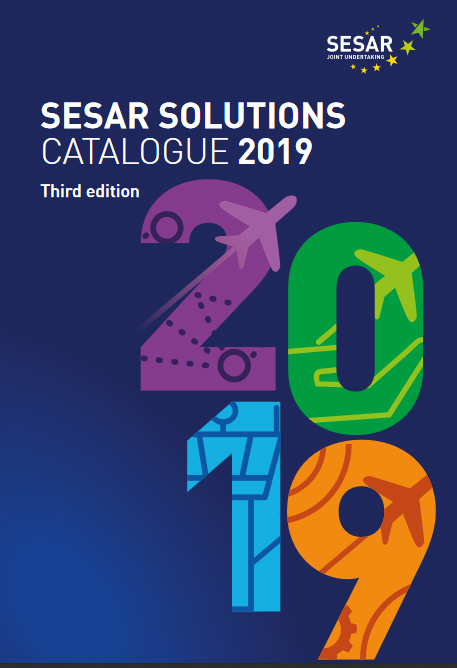
The SESAR Joint Undertaking has published the third edition of the SESAR Solution Catalogue, providing a holistic view of the status of SESAR R&D in 2019 and offering solutions to some of the pressing challenges facing European aviation today.
Published in time for the World ATM Congress, the publication covers the results of the first R&D programme (SESAR 1); more than 60 solutions, many of which are in the process of deployment at local and European levels. It also presents details of the ongoing R&D (candidate solutions) as we reach midway in the current programme, SESAR 2020.Finally, the catalogue gives a flavour of some of the promising results coming out of the SESAR’s dedicated exploratory research programme.
This Catalogue is the result of strong collaboration between the public-private partners that make up the SESAR JU. Together the SESAR JU partners have created a SESAR innovation pipeline through which concepts are transformed into tangible solutions. The pipeline is composed of 85 research projects and demonstrators, more than 50 test sites and is staffed by 2,500 researchers, controllers, pilots and engineers from across Europe. Not only do our members come together to pool their resources and expertise, they also make sure that R&D is carried out in a cooperative and
integrated manner following the vision of the European ATM Master Plan - the main planning tool for ATM modernisation – and in support of the Single European Sky and the EU Aviation Strategy.
Recognising the changing landscape of aviation and the challenges facing our sector, with this latest edition, we have sought to shine a light on some of the solutions (delivered and candidate) that have been identified as essential enablers for optimising capacity and airspace management, as well as for rendering the system more scalable and resilient. Performance benefits are also expected in other key areas, such as safety, security, efficiency and the environment, which the Catalogue highlights.
This Catalogue is a living document and will be updated as more solutions become ready for industrialisation and deployment within the framework of SESAR 2020.
